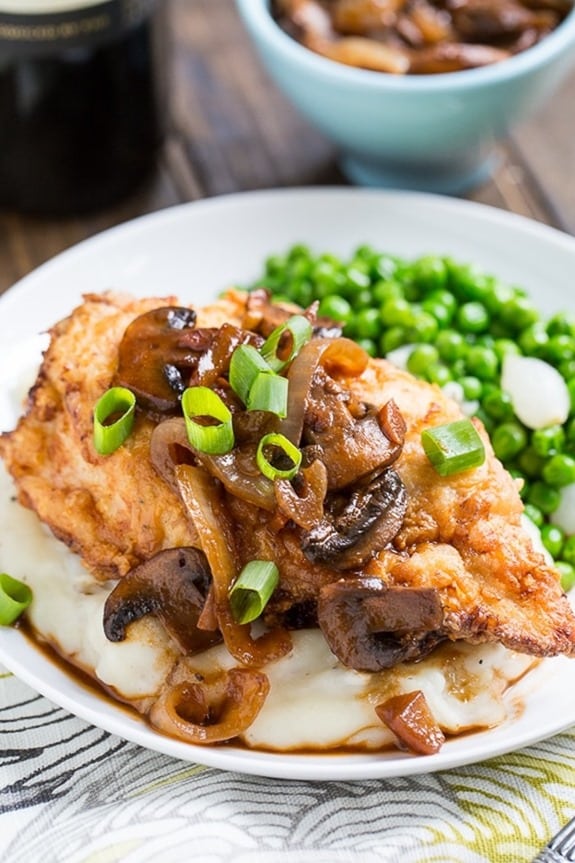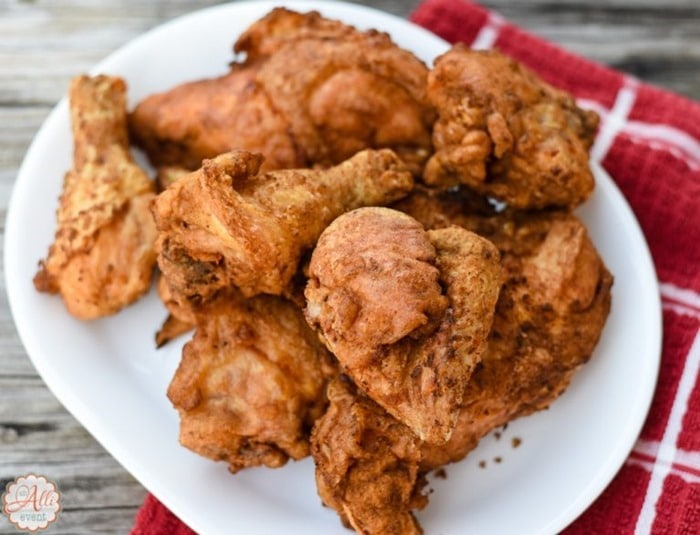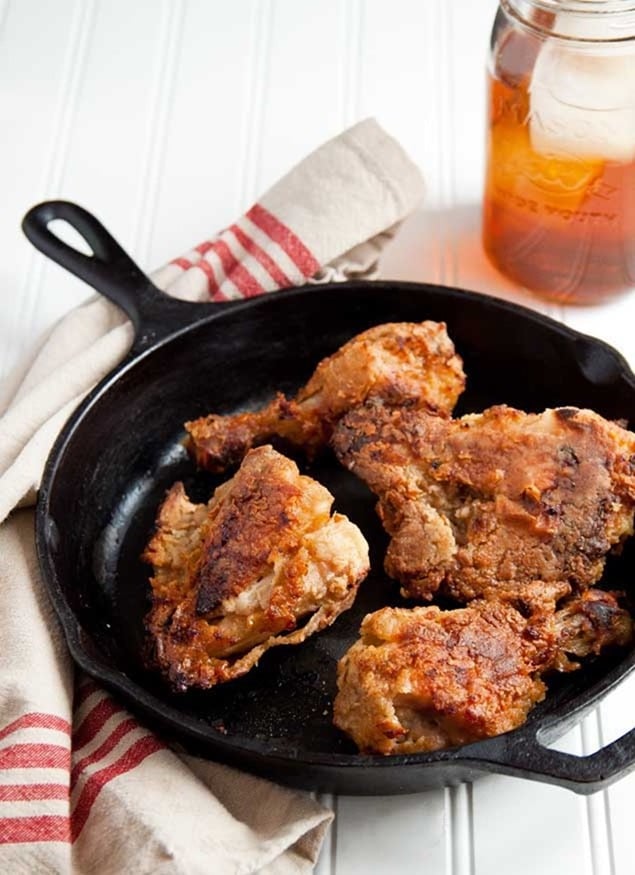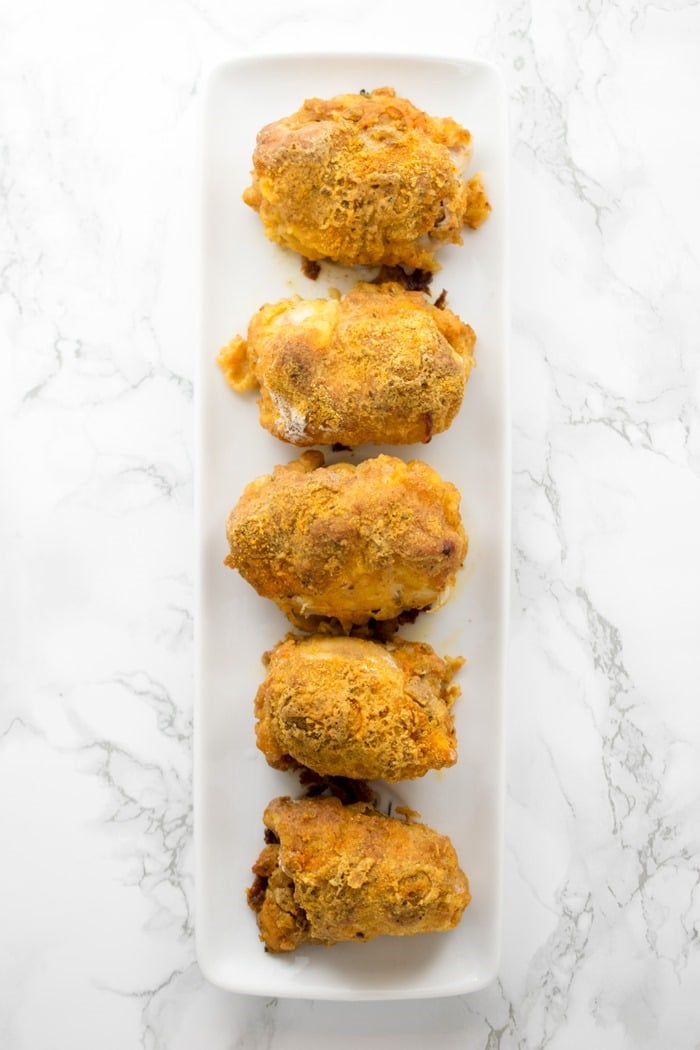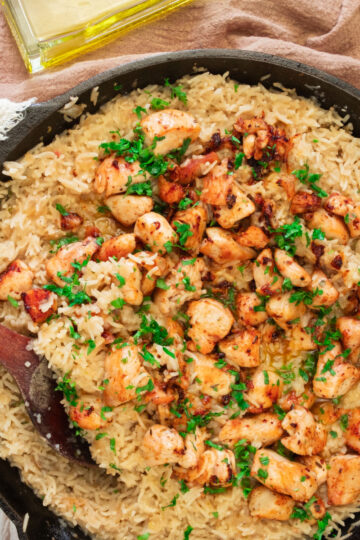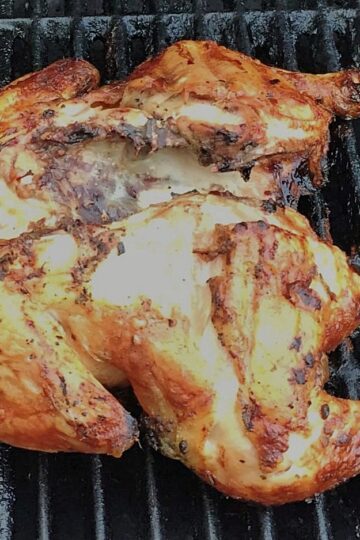Fried chicken is often cooked in a deep fryer, but there are other ways to cook "fried" chicken. The easy fried chicken recipes I'm sharing today use various cooking methods, including pan-frying and baking in the oven, which is the healthier option.
We have everything from our favorite Southern fried chicken recipe to a copycat KFC fried chicken recipe. If you have gluten intolerance, there's also a gluten-free option in there, so no need to skip this decadent comfort food. We all deserve a treat every once in a while!

Southern Fried Chicken from African Bites
The secret to this crispy chicken is the buttermilk marinade and a generous application of seasonings.
Low Carb & Gluten-Free Southern Fried Chicken from I Breathe I'm Hungry
This moist and tasty chicken is coated in coconut flour before frying.
Fried Chicken With Homemade Country Gravy from Fav Family Recipes
These chicken breasts are pounded thin which makes them cook faster and they are served with a white gravy made from the yummy pan drippings with all the crunchy bits and pieces.
Southern-Inspired Fried Chicken Sandwich from Olivia's Cuisine
Check out the coleslaw recipe!
Oven Fried Chicken (KFC Copycat) from Kevin Is Cooking
I don't know what the Colonel would say about this seasoning mix. Is it really the same. Looks good to me and this chicken is baked instead of fried.
Easy Southern Fried Chicken Recipe from That Skinny Chick Can Bake
Southern Fried Chicken Breasts With Cremini Sweet Onion Gravy from Spicy Southern Kitchen
Mom's Amazing Southern Fried Chicken from An Alli Event
Sweet Tea Oven-Fried Chicken from Dessert For Two
Copycat Kentucky Fried Chicken from Temecula Blogs
Oven Fried Southern Hot Honey Chicken from Half Baked Harvest
Buttermilk Fried Chicken from Jo Cooks
"Oven Fried" Homemade Southern Fried Chicken from Totally The Bomb
KFC Kievs from Every Nook And Cranny
Authentic Buttermilk Southern Fried Chicken from Sweet Tea & Thyme
Southern fried chicken was brought to the U.S by Scottish immigrants and since then it has evolved into endless varieties. Try several of these delicious and easy southern fried chicken recipes.






